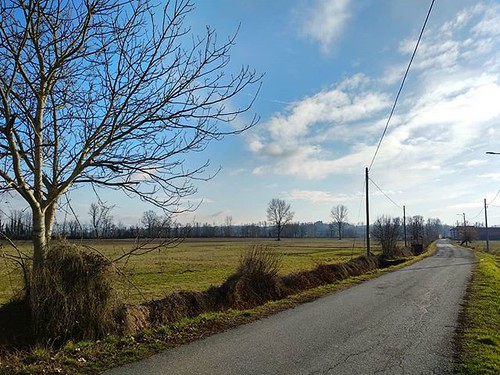R matrix in the MCT. In these models, the PubMed ID:https://www.ncbi.nlm.nih.gov/pubmed/13753077 fibrils will BET-IN-1 biological activity constantly be regarded to become arranged within the direction on the tissue axis. The applied force around the tissue will constantly be regarded as to become acting along the path from the tissue axis. At closer view, amongst any two fibrils are proteoglycansglycoproteins connected using the fibrils (Figure B); these protein macromolecules are assumed to become involved in regulating the transfer of stress from the matrix to the fibril as well as involving the fibrils. It’s also assumed that there are actually several such proteoglycansglycoproteins; bonds (e.g van Der Waals, hydrogen) exist amongst proteoglycansglycoproteins on adjacent fibrils; these proteoglycansglycoproteins are distributed uniformly more than the fibrilmatrix interface so that continuum mechanics can be used to analyze the issue ,,. For simplicity, most models are according to solving the pressure Gynosaponin I inside a single collagen fibril embedded in the matrix as illustrated in Figure C. Suppose the fibril is parallel for the axis of your tissue; furthermore, an external tensile load acts along the axis of your tissue.General model collagen fibril in extracellular matrix (ECM). An array of parallel Figure . General model of of collagenfibril in extracellularmatrix (ECM). (A)(A) An array of parallel collagen. Common model of collagen fibril in extracellular Figure fibrils embedded inside the ECM. The vertical dard bands and light shades represent the Dcollagen fibrils embedded in the ECM. The vertical dard bandsmatrix (ECM). (A)represent theparallel and light shades An array of Dperiodic periodic patterns. (B) Interaction of collagen fibrils in dard bands Right here light shades represent the to collagen fibrils embedded within the ECM. The vertical the matrix. and the interaction is assumed Dpatterns. (B) Interaction of collagen fibrils within the matrix. Right here the interaction is assumed to be aided be aided patterns. (B) Interaction of collagen fibrils inside the matrix.although the precise identity of your periodic somewhat by proteoglycans and glycosaminoglycans, Here the interaction is assumed to somewhat by proteoglycans and  glycosaminoglycans, while the exact identity of the proteoglycans proteoglycans has however toproteoglycans and glycosaminoglycans, even though the glycoproteins. (C)the be aided somewhat by be determined. Not shown within this schematic are the precise identity of A has however to be determined. to become shownuniform schematic will be the glycoproteins. (C) A single(C) A in this cylinder. The fibril centre, O, the glycoproteins. the single collagen has however Not determined. Not shown in this schematic are defines the origin ofcollagen proteoglycans fibril modelled as a fibril cylindrical polarfibril modelled as a (r,,z), exactly where the zThe defines the origin of the cylindrical polar modelled as a uniform cylinder. uniform cylinder. axisfibril centre, O, defines the the fibril. Of single collagen coordinate technique The fibril centre, O, coincides with all the axis of origin on the coordinate system fibrilmatrix model in element Ccoincides
glycosaminoglycans, while the exact identity of the proteoglycans proteoglycans has however toproteoglycans and glycosaminoglycans, even though the glycoproteins. (C)the be aided somewhat by be determined. Not shown within this schematic are the precise identity of A has however to be determined. to become shownuniform schematic will be the glycoproteins. (C) A single(C) A in this cylinder. The fibril centre, O, the glycoproteins. the single collagen has however Not determined. Not shown in this schematic are defines the origin ofcollagen proteoglycans fibril modelled as a fibril cylindrical polarfibril modelled as a (r,,z), exactly where the zThe defines the origin of the cylindrical polar modelled as a uniform cylinder. uniform cylinder. axisfibril centre, O, defines the the fibril. Of single collagen coordinate technique The fibril centre, O, coincides with all the axis of origin on the coordinate system fibrilmatrix model in element Ccoincides  with all the axis ofwith quite a few ofOf note, the Of note, the single (r,,z), exactly where the z (r,,z),offers the basic coincides the the axis thethe fibril. single cylindrical polar coordinate method axis where the z axis “template” for fibril. of s in thisthe single in element C delivers the fibril is the key concerned (seeof for s within this review fibrilmatrix model fibrilmatrix model in part C offers the basic “template”the several of Figure A for fundamental “template” for a lot of Figur.R matrix with the MCT. In these models, the PubMed ID:https://www.ncbi.nlm.nih.gov/pubmed/13753077 fibrils will normally be regarded as to become arranged inside the path of your tissue axis. The applied force on the tissue will usually be viewed as to become acting along the direction on the tissue axis. At closer view, involving any two fibrils are proteoglycansglycoproteins associated together with the fibrils (Figure B); these protein macromolecules are assumed to become involved in regulating the transfer of anxiety from the matrix towards the fibril too as in between the fibrils. It is also assumed that you can find a lot of such proteoglycansglycoproteins; bonds (e.g van Der Waals, hydrogen) exist in between proteoglycansglycoproteins on adjacent fibrils; these proteoglycansglycoproteins are distributed uniformly over the fibrilmatrix interface to ensure that continuum mechanics could be employed to analyze the problem ,,. For simplicity, most models are determined by solving the tension within a single collagen fibril embedded inside the matrix as illustrated in Figure C. Suppose the fibril is parallel towards the axis in the tissue; also, an external tensile load acts along the axis on the tissue.Common model collagen fibril in extracellular matrix (ECM). An array of parallel Figure . Common model of of collagenfibril in extracellularmatrix (ECM). (A)(A) An array of parallel collagen. Basic model of collagen fibril in extracellular Figure fibrils embedded within the ECM. The vertical dard bands and light shades represent the Dcollagen fibrils embedded within the ECM. The vertical dard bandsmatrix (ECM). (A)represent theparallel and light shades An array of Dperiodic periodic patterns. (B) Interaction of collagen fibrils in dard bands Here light shades represent the to collagen fibrils embedded in the ECM. The vertical the matrix. plus the interaction is assumed Dpatterns. (B) Interaction of collagen fibrils inside the matrix. Here the interaction is assumed to become aided be aided patterns. (B) Interaction of collagen fibrils in the matrix.despite the fact that the exact identity on the periodic somewhat by proteoglycans and glycosaminoglycans, Right here the interaction is assumed to somewhat by proteoglycans and glycosaminoglycans, though the exact identity in the proteoglycans proteoglycans has but toproteoglycans and glycosaminoglycans, despite the fact that the glycoproteins. (C)the be aided somewhat by be determined. Not shown in this schematic will be the precise identity of A has yet to be determined. to be shownuniform schematic would be the glycoproteins. (C) A single(C) A within this cylinder. The fibril centre, O, the glycoproteins. the single collagen has yet Not determined. Not shown in this schematic are defines the origin ofcollagen proteoglycans fibril modelled as a fibril cylindrical polarfibril modelled as a (r,,z), where the zThe defines the origin with the cylindrical polar modelled as a uniform cylinder. uniform cylinder. axisfibril centre, O, defines the the fibril. Of single collagen coordinate method The fibril centre, O, coincides together with the axis of origin from the coordinate technique fibrilmatrix model in aspect Ccoincides using the axis ofwith several ofOf note, the Of note, the single (r,,z), where the z (r,,z),delivers the fundamental coincides the the axis thethe fibril. single cylindrical polar coordinate technique axis exactly where the z axis “template” for fibril. of s in thisthe single in aspect C gives the fibril may be the crucial concerned (seeof for s in this overview fibrilmatrix model fibrilmatrix model in component C supplies the fundamental “template”the quite a few of Figure A for simple “template” for many Figur.
with all the axis ofwith quite a few ofOf note, the Of note, the single (r,,z), exactly where the z (r,,z),offers the basic coincides the the axis thethe fibril. single cylindrical polar coordinate method axis where the z axis “template” for fibril. of s in thisthe single in element C delivers the fibril is the key concerned (seeof for s within this review fibrilmatrix model fibrilmatrix model in part C offers the basic “template”the several of Figure A for fundamental “template” for a lot of Figur.R matrix with the MCT. In these models, the PubMed ID:https://www.ncbi.nlm.nih.gov/pubmed/13753077 fibrils will normally be regarded as to become arranged inside the path of your tissue axis. The applied force on the tissue will usually be viewed as to become acting along the direction on the tissue axis. At closer view, involving any two fibrils are proteoglycansglycoproteins associated together with the fibrils (Figure B); these protein macromolecules are assumed to become involved in regulating the transfer of anxiety from the matrix towards the fibril too as in between the fibrils. It is also assumed that you can find a lot of such proteoglycansglycoproteins; bonds (e.g van Der Waals, hydrogen) exist in between proteoglycansglycoproteins on adjacent fibrils; these proteoglycansglycoproteins are distributed uniformly over the fibrilmatrix interface to ensure that continuum mechanics could be employed to analyze the problem ,,. For simplicity, most models are determined by solving the tension within a single collagen fibril embedded inside the matrix as illustrated in Figure C. Suppose the fibril is parallel towards the axis in the tissue; also, an external tensile load acts along the axis on the tissue.Common model collagen fibril in extracellular matrix (ECM). An array of parallel Figure . Common model of of collagenfibril in extracellularmatrix (ECM). (A)(A) An array of parallel collagen. Basic model of collagen fibril in extracellular Figure fibrils embedded within the ECM. The vertical dard bands and light shades represent the Dcollagen fibrils embedded within the ECM. The vertical dard bandsmatrix (ECM). (A)represent theparallel and light shades An array of Dperiodic periodic patterns. (B) Interaction of collagen fibrils in dard bands Here light shades represent the to collagen fibrils embedded in the ECM. The vertical the matrix. plus the interaction is assumed Dpatterns. (B) Interaction of collagen fibrils inside the matrix. Here the interaction is assumed to become aided be aided patterns. (B) Interaction of collagen fibrils in the matrix.despite the fact that the exact identity on the periodic somewhat by proteoglycans and glycosaminoglycans, Right here the interaction is assumed to somewhat by proteoglycans and glycosaminoglycans, though the exact identity in the proteoglycans proteoglycans has but toproteoglycans and glycosaminoglycans, despite the fact that the glycoproteins. (C)the be aided somewhat by be determined. Not shown in this schematic will be the precise identity of A has yet to be determined. to be shownuniform schematic would be the glycoproteins. (C) A single(C) A within this cylinder. The fibril centre, O, the glycoproteins. the single collagen has yet Not determined. Not shown in this schematic are defines the origin ofcollagen proteoglycans fibril modelled as a fibril cylindrical polarfibril modelled as a (r,,z), where the zThe defines the origin with the cylindrical polar modelled as a uniform cylinder. uniform cylinder. axisfibril centre, O, defines the the fibril. Of single collagen coordinate method The fibril centre, O, coincides together with the axis of origin from the coordinate technique fibrilmatrix model in aspect Ccoincides using the axis ofwith several ofOf note, the Of note, the single (r,,z), where the z (r,,z),delivers the fundamental coincides the the axis thethe fibril. single cylindrical polar coordinate technique axis exactly where the z axis “template” for fibril. of s in thisthe single in aspect C gives the fibril may be the crucial concerned (seeof for s in this overview fibrilmatrix model fibrilmatrix model in component C supplies the fundamental “template”the quite a few of Figure A for simple “template” for many Figur.